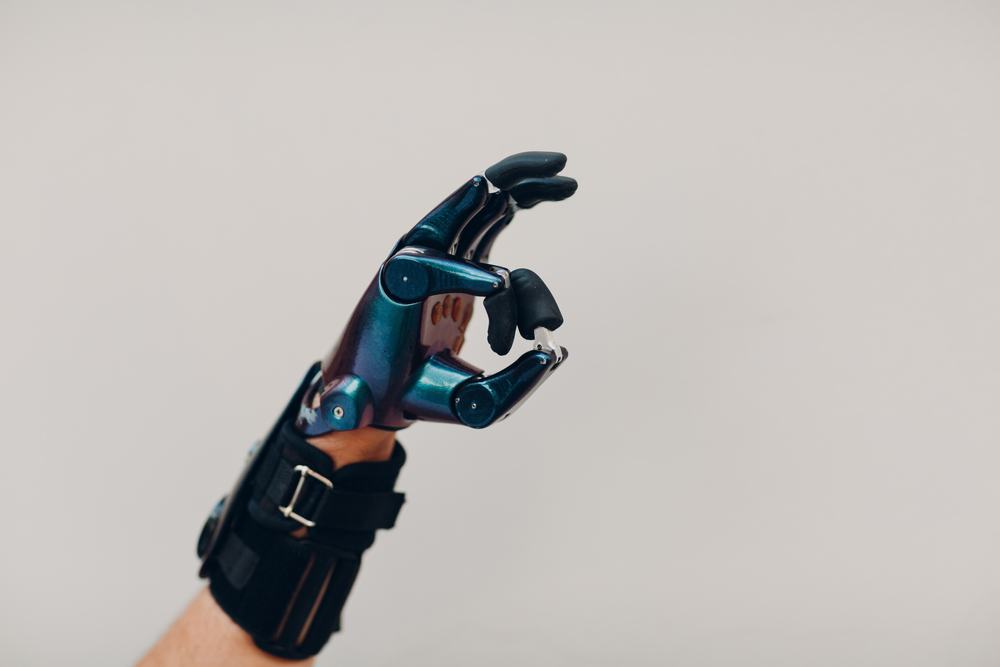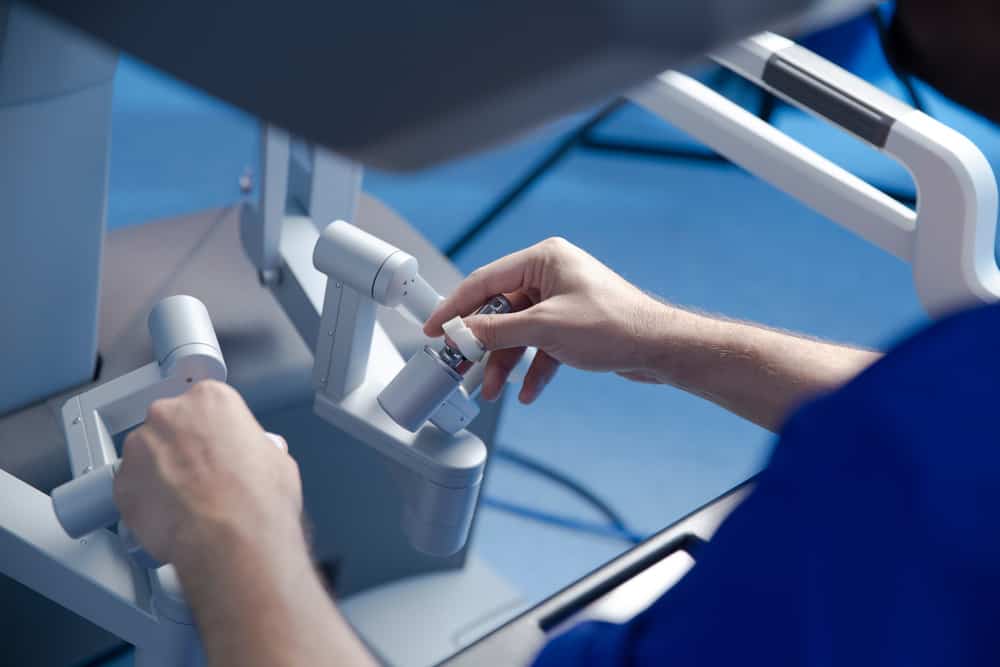
Mechatronics applications in the medical field are vast, including this prosthetic shown here.
Medicine is constantly witnessing remarkable advancements, improving patient care, diagnosis, and treatment. One of the most transformative forces driving innovation in healthcare is mechatronics, a multidisciplinary field that merges mechanical engineering, electronics, computer science, and control engineering. The application of mechatronics in the medical field has opened up exciting possibilities, leading to more accurate diagnoses, minimally invasive surgeries, and improved patient outcomes. From sensors identifying physical, chemical, and biological cues to minuscule mechatronic systems that allow for endoscopic surgical instruments and home monitoring devices to telemedicine solutions, implanted medical gadgets, and robotic surgical apparatuses, the application of mechatronics in the medical field is vast.
Applications Of Mechatronics in the Medical Field
The table below summarizes how mechatronics are being utilized to improve the tools available to medical practitioners.
|
APPLICATIONS OF MECHATRONICS IN THE MEDICAL FIELD |
|
|
Application |
Description |
|
Robotic Surgery Systems |
Enhancing surgical precision and dexterity with systems like the da Vinci Surgical System. |
|
Miniaturized Healthcare Mechatronics |
Creating small-scale devices and instruments for less invasive surgeries and precision applications. |
|
Mechatronics for Motion and Care |
Enhancing healthcare equipment like stretchers, examination coaches, and hospital beds for better patient care. |
|
Prosthetics and Exoskeletons |
Designing advanced prosthetic limbs and exoskeletons with sensors and actuators for improved mobility. |
|
Diagnostic Imaging |
Modern diagnostic imaging systems (MRI, CT, ultrasound) rely on mechatronics for high-resolution images. |
|
3D Printing |
3D printing used for printing vital components, including prosthetic organs, and tissues. |
|
Drug Delivery Systems |
Developing advanced drug delivery systems such as insulin pumps and implantable drug release devices. |
|
Laboratory Automation |
Automation of laboratory equipment like liquid handling robots and high-throughput screening systems for research and diagnostics. |
As shown above, the types of advanced technology and range of applications that target and/or include mechatronics is extensive. Consequently, it is important to understand which specific areas of healthcare are benefiting the most from these implementations.
Overview of Mechatronics in Healthcare
In healthcare, mechatronics leverages various technologies to develop devices, equipment, and systems that enhance the delivery of medical services. The core objective of mechatronics is to design and create “intelligent” machines and smart products, including innovations of robotic surgical instruments, intelligent positioning beds, exoskeletons, care robots, hospital robots, and life-saving medical devices like pacemakers and defibrillators.
Mechatronics for Medical Surgery
Robotic surgery systems have transformed the landscape of surgical procedures. Inventions like the da Vinci Surgical System and other surgical robots enhance surgeons’ dexterity and precision during surgeries. Utilizing a combination of robotic arms, cameras, and advanced software allows surgeons to perform intricate operations with incredible precision. Using these technologies, surgeons can perform highly delicate and risky procedures.

Surgeon using a robot to assist in surgery.
Miniaturized Healthcare Mechatronics
The creation of small-scale devices and instruments is another important application of mechatronics. They facilitate less invasive surgical techniques that, in turn, contribute to swifter recovery times. This push for miniaturization owes much of its success to integrating microactuators and sensors, which find application in various critical areas of healthcare. Some examples include:
- Miniaturized mechatronic systems are instrumental in DNA identification and sequencing, employing gantry robots to ensure precision and efficiency.
- Tiny robotic systems play a significant role in healthcare, particularly in tasks requiring mobility and access to tight spaces.
- Miniaturized pumps are indispensable for controlled fluid delivery in various medical applications.
- The development of compact auto-injectors aids in precise and controlled drug delivery, benefitting patients with specific medical needs.
- Miniaturized mechatronic instruments are integral to flow cytometry, allowing for the detailed analysis of cells and particles in biological samples.
- Mechatronics technology is crucial in creating compact and sensitive pathogen detection systems, aiding in rapidly identifying harmful microorganisms.
- Miniaturized mechatronics components enable the fine-tuning and control of lasers and lenses in medical imaging systems, enhancing the precision of diagnostic tools.
Mechatronics for Motion and Care
Mechatronics also represents the fusion of traditional hydraulics with cutting-edge motion control technologies, resulting in increasingly streamlined, quieter, more compact systems. Mechatronics finds its application in various essential healthcare equipment, including
- Incorporating mechatronics in stretchers allows for enhanced maneuverability and adaptability, facilitating patients’ efficient and comfortable transport.
- Mechatronics technology contributes to the precision and flexibility of examination coaches, ensuring optimal patient positioning and comfort during medical examinations.
- Mechatronics-driven actuation systems for hospital beds make them more versatile, enabling easy adjustments to meet the specific needs of patients, thus improving overall care.
- In medical imaging equipment, mechatronics is instrumental in controlling and fine-tuning gantry systems, ultimately enhancing the quality and accuracy of diagnostic procedures.
Prosthetics and Exoskeletons
Mechatronics is pivotal in designing advanced prosthetic limbs and exoskeletons that enhance mobility and functionality. These devices incorporate sensors, actuators, and microcontrollers to replicate the natural movement of human limbs, thereby improving the quality of life for amputees and people with mobility challenges. Additionally, recent advancements in mechatronics have introduced sophisticated, active prosthetic limbs, prosthetic hands, and fingers, allowing individuals to grasp and manipulate objects with exceptional skill and precision.
A noteworthy development in exoskeleton technology is the concept of “machine-brain connectivity,” which promises even more seamless integration between the user’s intentions and the device’s actions. An excellent example of this innovation is the bebionic prosthetic hand, which incorporates microprocessors for precise manipulation. This technology enables the prosthetic hand to perform delicate tasks, such as picking up an egg or threading a needle, with impressive dexterity and control.
Diagnostic Imaging
Modern diagnostic imaging relies heavily on mechatronics, such as magnetic resonance imaging (MRI), computed tomography (CT), and ultrasound machines. These systems employ complex algorithms, mechanical movements, and electronic components to produce high-resolution images, aiding in detecting and diagnosing various medical conditions.
3D Printing
The capabilities of 3D printing extend to printing an array of vital components, including stem cells, blood vessels, heart tissues, prosthetic organs, and even skin. This innovation goes beyond fabrication, which has profound implications for studying and treating diseases like cancer. Researchers are now utilizing 3D printing to replicate cancerous cells, a development that can potentially drive the creation of more effective medications to combat this devastating disease.
Drug Delivery Systems
Mechatronics is vital in developing advanced drug delivery systems, such as insulin pumps and implantable drug release devices. These devices can precisely administer medication, ensuring accurate dosage and reducing the risk of side effects. Mechatronics is also used in the design of smart inhalers and transdermal patches.
Laboratory Automation
In research and diagnostics, mechatronics has led to the development of automated laboratory equipment, such as liquid handling robots and high-throughput screening systems. These systems can accelerate the pace of scientific discovery, streamline experiments, and reduce the risk of errors.
Developing Mechatronics Devices for Medical Applications
Mechantronics medical devices typically fall in the categories of Class 2 or Class 3 medical devices. Therefore, it is imperative that guidelines, as listed below, be followed when designing PCBs and electronic devices that control and/or integrate with mechanical systems for the medical industry.
Optimizing Application Of Mechatronics in the Medical Field PCB Development
- Select components based on an understanding of their applicability for mechatronics use.
- Only use CAD models and data from a trusted component library resource.
- Prioritize safety at all stages of design and development.
- Optimize your ECAD/MCAD development process by using industry standard 3D CAD models and best practices.
If you’re looking for CAD models for common components for any projects that may have an application of mechatronics in the medical field, Ultra Librarian helps by compiling all your sourcing and CAD information in one place.
Working with Ultra Librarian sets up your team for success to ensure streamlined and error-free design, production, and sourcing. Register today for free.








